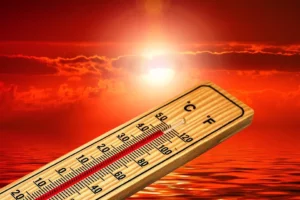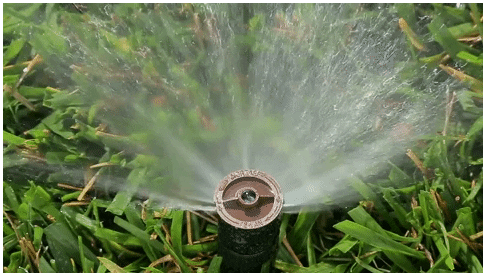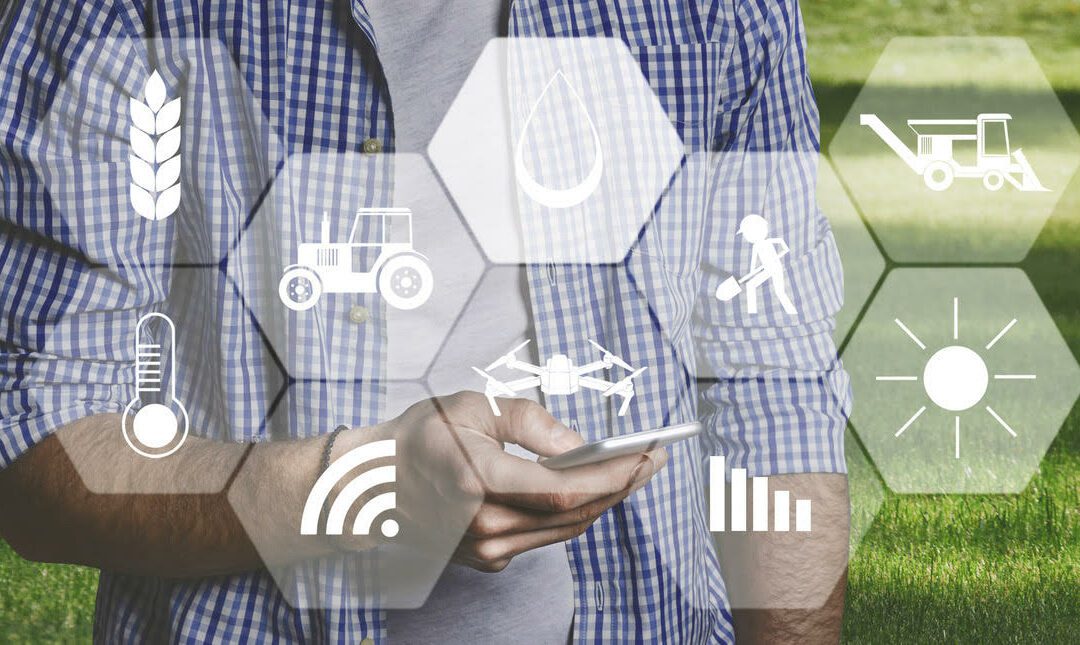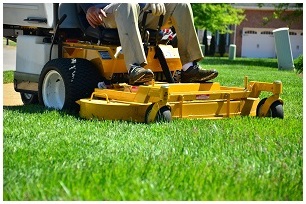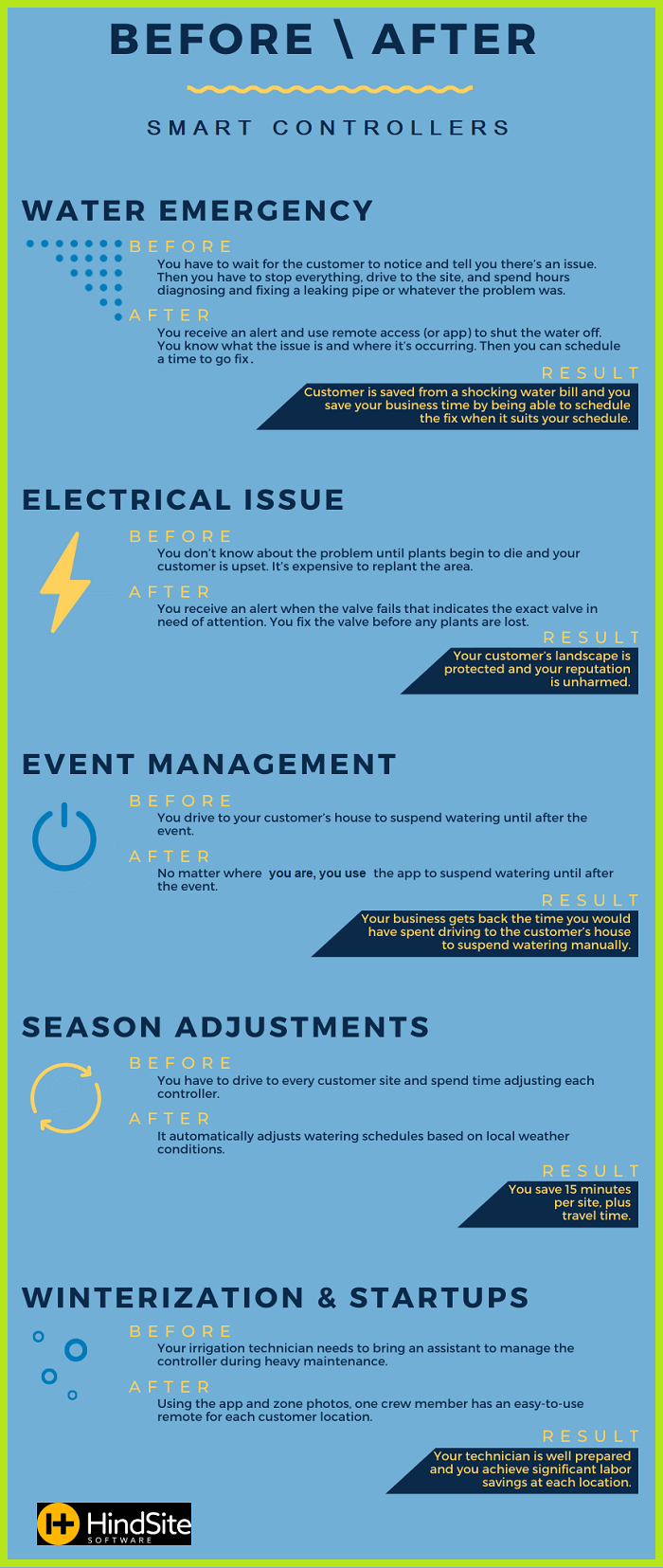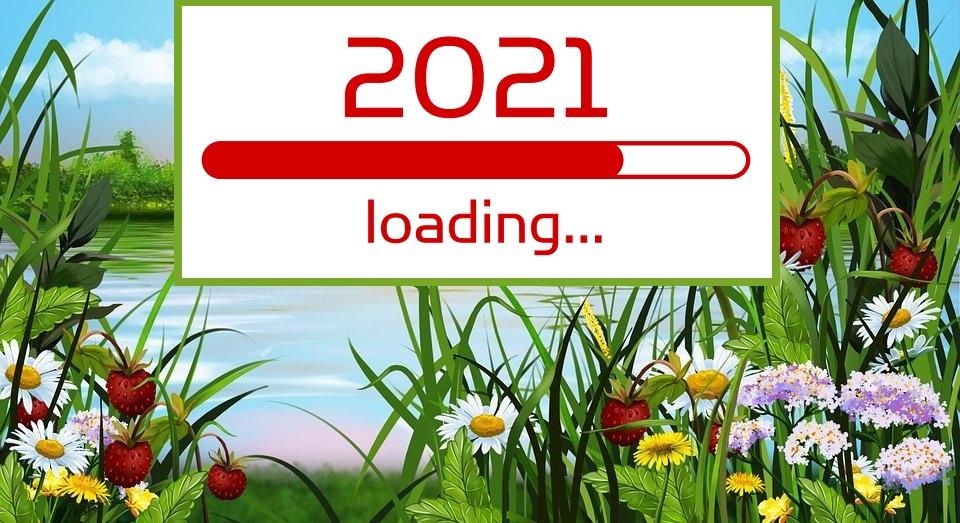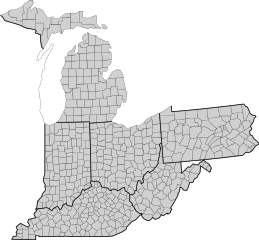
by Tom Barrett | Aug 10, 2022
Tips for a Profitable Partnership
As an irrigation contractor, one of the surest ways to enhance your bottom line – as well as your professional reputation – is to develop a solid and meaningful relationship with your distributor.
If you’re ready to make this partnership a priority, here are a few “don’ts” to keep in mind:
Don’t Be a Stranger
The pandemic showed us how to fall back on virtual meetings and transactions when personal interactions weren’t possible or prudent. Now that we’re moving past that stage, face-to-face meetings should re-emerge as the better way to cultivate mutually beneficial relationships with distributors.
Try to stop in periodically so they can make that personal connection. This conveys a clear message to your distributor that the relationship is important to you.
Keep communication candid and frequent. Suppliers often make decisions based on ongoing conversations with their customers. Create a process so that electronic communications in particular don’t get out of hand.
![]()
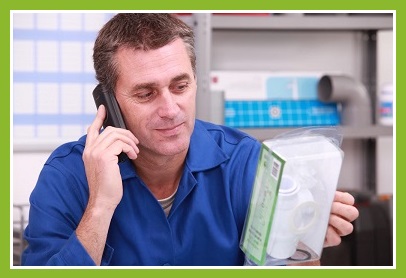 When Selecting
When Selecting
a Supplier
When first selecting a supply partner, keep in mind the three Ps: products, people and proximity.
- Products – Make sure your distributor of choice carries the products and brands you prefer, and offers up-to-date and innovative solutions.
- People – Gauge the knowledge level of the supplier’s employees. The staff should be well-informed and understand the challenges contractors face.
- Proximity – Is the supplier located within a reasonable distance of your shop or job sites? You don’t want to waste valuable time running back and forth if you encounter a problem.
Along those same lines, be honest with your distributors about the size of your business. Don’t over- or under-sell it. Let them know how often you’ll need materials and what’s most important to achieve your business goals.
Don’t Sound False Alarms
If you sound a false alarm one too many times, you’ll get little to no response. For irrigation contractors, this means try not to expect immediate service from your distributor all the time. Reserve calling in favors for true emergencies.
Remember, your distributor is also juggling multiple priorities. He’s servicing hundreds of customers while also interfacing with manufacturers for required stock. You’ll make his life easier (and strengthen your partnership) if you don’t make every situation a rush request.
Don’t Be Afraid to Negotiate
Both you and your distributor must account for every penny. Once you understand how suppliers set price points, you can negotiate mutually beneficial terms (such as preferred product mix and delivery schedules) as well as costs. While it’s okay to purchase a few items online in the interest of cost savings, remember that solid distributor support will benefit your business more in the long run.
However, expecting a trifecta win of best price, best quality, and best service for every product you purchase from your supplier is unrealistic. Cash discounts and special account terms can be just as valuable as the best pricing, and they provide the added benefit of fostering a win-win relationship with your distributor.
If your business is too small to leverage steep product discounts, consider teaming up with a like-minded contractor so you too can enjoy the type of sales volume that qualifies for a discount.
Lastly, to minimize the risk of misunderstandings, put the result of your negotiations in writing.
—Article Continues Below—

Don’t Hesitate to Ask for Help
While it’s important to negotiate your best deal, be sure to ask for help when needed.
Components are continually being redesigned to improve efficiency, and new releases are common. Suppliers are incentivized to stock and promote specific items, so they’ll be glad to hook you up with the latest and greatest products. Don’t hesitate to ask if your distributor offers training for you and your staff.
Occasionally, even highly reputable brands will fail in the field. When that happens to you, make sure your supplier is informed. He’s likely in a position to offer assistance. And if there’s truly an issue with a product, your distributor can go to bat for you with the manufacturer.
More Than Just Dollars and Cents
The makings of a great supplier relationship go well beyond pricing. Of course, you want the best price to get the job done. But professionalism and mutual respect run deeper. Contractors and distributors rely on each other for their very survival.
Prudent professionals on both sides of the counter will work to ensure this valuable association receives the attention it deserves.
Sources:
Featured Image: Adobe, License Granted
Landscape Management
Lighting & Irrigation

by Tom Barrett | Jul 6, 2022
“Why Does My Lawn Look Dead?”
Along with July’s intense summer heat comes the prospect of seasonal drought.
In Ohio, we get more than our fair share of 90-degree summer days. These extreme temperatures and dry periods can cause cool-season grasses, such as bluegrass and fescue, to become dormant. That’s when irrigation contractors can expect to receive calls from concerned homeowners.
Have an Education Plan
The prepared contractor has a plan in place to address these customer concerns. You can help alleviate homeowner concerns by educating them on the grass germination and growth process.

Ohio’s Hottest Summer
July 1934 was the hottest month ever recorded in Ohio, setting the following heat records:
- Columbus – 106° F
- Bowling Green – 107° F
- Delaware – 108° F
- Cincinnati – 109° F
- Findlay – 109° F
- Chillicothe – 109° F
- Fremont -110° F
- Wilmington – 111° F
- Hamilton – 111° F
- Defiance – 111° F
- Gallipolis – 113° F
About 160 Ohioans died of heat-related causes during the week of July 20-26, 1934. More recently, during an extreme heat wave in July 2019, the mercury levels climbed to 112 degrees in northern Ohio.
Source: Cleveland.com
For instance, explain how different seeds germinate at different times, and the importance of watering longer but less often.
Your customers need to know that dormancy is nature’s defense mechanism to help plants survive tough, stressful conditions. Avoiding it completely during the dog days of summer can be difficult, but there are things they can do to help lessen its impact.
In general, lawns that have gone dormant should be left dormant until cooler weather sets in. Occasional watering will help prevent damage, but don’t overdo it. Overwatering a lawn in an effort to “wake it up,” can be very stressful to the turf.
Inform your customers that bluegrass can typically withstand about six weeks of dormancy before it suffers drought damage. Factors that can accelerate dormancy include secondary heat from buildings or fences, or south-facing slopes.
Seasonal Drought Survival Tips
Provide your customers with these practical tips on how they can mitigate the effects of dormancy on their lawns:
- Grow drought-tolerant grasses. Most grasses can withstand some dormancy very well, but some grasses cope better than others. For instance, buffalo grass, fine-leaf or tall fescues, and older varieties of Kentucky bluegrass are the most drought-tolerant species found in Ohio.

Columbus-Area
Watering Restrictions
Several municipalities within the Columbus metro area maintain watering schedules year-round, but particularly during the hottest months. For example:
Westerville – Addresses that end in even numbers can water grass on even-numbered days, and those that end in odd numbers on odd-numbered days. (This restriction does not apply to flowerbeds, trees, shrubs and gardens.
Delaware – During periods of limited rainfall, addresses that end in odd numbers can water on Tuesday, Thursday, and Saturday; even-numbered addresses may water on Wednesday, Friday and Sunday. All watering is prohibited on Mondays.
The communities of Gahanna, Dublin, Hilliard, Upper Arlington, Powell, Bexley, Grandview, and Granville impose similar restrictions during the driest months.
Source: Wikilawn
- Newly sodded or seeded lawns should not go dormant. Grass must be well established in order to survive a period of drought. Likewise, lawn that has been damaged by disease or insects does not tolerate dormancy well. It is advised that you water the lawn regularly to keep it green.
- Keep turf as high as possible by raising the mowing height to 3-4 inches during the hottest time of the year. This allows for deeper root development, and tall grass dries out more slowly than shorter grass.
- Understand a dormant lawn’s water needs. A sleeping lawn needs at least half an inch of water every two to three weeks in order to stay alive. If the lawn is receiving that much rainfall, then there is no need to water at all.
- Minimize traffic on the lawn. Foot or vehicle traffic can kill the grass and cause bare spots in the lawn.
- Once summer passes, thoroughly water the lawn to wake it up. Apply enough water to penetrate the soil down to the root — about six to 12-inches below the ground. After about several weeks of cooler temperatures and adequate precipitation, the lawn will be green once again.
Sources:
Featured Image: Adobe, License Granted
Irrigation & Lighting
Green Industry Pros
LawnEQ

by Tom Barrett | Apr 7, 2021
Irrigation Apps Can Take Your Business
to the Next Level
Installing, inspecting, auditing, adjusting and repairing irrigation systems requires a lot of information processing. Mobile app technology will not only help manage it all, it can streamline your business.
Let’s take a look at a few of these tools, beginning with the most basic:
Smart Controller Apps
There are a myriad of mobile apps for programming, adjusting and testing smart irrigation systems.—one for just about every type of smart controller, in fact. And they’re easy to use.
Simply download the app of your preferred irrigation controller and you can access any system you’ve installed. Receive real-time alerts, flow data and other diagnostic information, so any issues can be resolved right away.

Especially for Landscapers
Are you a landscaper? Here are some of the most popular apps for streamlining both the business and the green side of your landscaping company.
- Harvest Landscape Calculator – Simply enter in the length, width, and depth of the given property, and this app will calculate how much product you need to cover it.
- Landscaper’s Companion – This handy reference guide provides information on thousands of plants, as well as digital images.
- iScape – Let your customers see their new landscape digitally before you ever start digging. Create a design, then move around the various plants, trees, and hardscapes according to their desires.
- Planimeter – This app works with GPS and Google Maps to accurately measure the perimeter, angle, area, and distance of a given environment.
And while each controller’s app is different, most allow you to update a schedule, add or remove watering zones, and monitor the system’s performance, without requiring a visit to the residence.
GIS Mapping
Geographic Information System (GIS) mapping integrates various types of data by analyzing spatial location and organizing it through maps and 3D imagery.
The ArcGIS platform, produced by Esri, is probably the most widely used application for GIS mapping. It’s the preferred tool for 84 federal agencies, as well as countless state and local entities, including the Ohio Department of Natural Resources.
This tool includes a functionality that transports desktop mapping onto the web, allowing irrigation technicians to access all GIS files via their smartphones. ArcGIS integrates with GPS so that infrastructure and system components can be located quickly and easily via turn-by-turn directions.
The result? A better organized team.
System Inspections
The GoCanvas inspection app can analyze the irrigation run schedule to determine if any changes should be made to the controller’s current, calculated and proposed schedules. After each analysis, a summary screen displays inspection results and calculations.
The app also allows you to capture before-and-after photos of repairs, document locations with integrated mapping, and provide details of issues encountered. Your customers will receive clear and concise communications.
Digital or PDF inspection forms and other documents can be stored in the GoCanvas Cloud.
Workflow Customization
Google-owned AppSheet allows users to create a customized app from a spreadsheet Technicians can access GPS, take pictures, and then upload to Google Suite. Workflows are then created by AppSheet using a designated list of jobs and adding photos as needed.
The tool allows you to automate workflows, which can then be emailed or saved as PDF documents. Can also be configured to send automatic alerts to customers.
Freebies!
As you can see, there are a ton of mobile apps available to irrigation professionals. But some of the best won’t cost you a dime. For instance:
Bosch Toolbox: This app lets you measure your jobsite, document (with photos, video, or notes), and export as needed.
—Article Continues Below—

Milwaukee One-Key: Retain better control of your equipment and tools with this inventory and tracking app. Pairs with the TICK tracking device hidden on your equipment.
PlanGrid: Offers real-time access to drawings, punch lists, and other submittals via any mobile device. Eliminates the need for paper plans on site.
QuickBooks Time: No more paper time sheets or punch cards with this cloud-based time tracking and scheduling app.
And don’t forget about all the free weather apps (such as Accuweather, NOAA, and the Weather Channel) for up-to-the-minute forecasts and radar.
Sources:
Featured Image: Adobe, License Granted
Landscape Management
KRain
Landscape Writer

by Tom Barrett | Jan 6, 2021
What Can Irrigation Contractors Expect
in the Coming Year?
The COVID pandemic has adversely affected nearly every aspect of the U.S. economy. Looking forward, what can we expect in 2021, specifically for the landscape irrigation industry?
Many experts are anticipating a quiet year for the entire green industry. But while some segments of the industry are predicted to struggle in 2021, others are actually expected to grow.
A COVID Survivor
Compared to most other industries across the country, landscaping and irrigation services fared well throughout the first few hard months of the pandemic. As Americans started working remotely and generally staying home due to travel restrictions, they tended to spend their vacation funds on home-related projects, such as renovations or improving their outdoor space.
Abheek Dhawan is the vice president of Jobber, a home services automation platform. He recently stated that the green industry was hardest hit in mid-April of last year. But by June, Dhawan said, the demand for landscaping and irrigation services had returned to pre-pandemic levels.
Industry Segments Likely to Suffer
According to landscaper and podcast host Stanley Genadek, the 2021 outlook for two segments of the industry remains rather bleak: snow removal and commercial landscaping/irrigation.

The IA’S Take
on COVID-19
In its Framework for Economic Recovery, the national Irrigation Association has recognized that the COVID pandemic has seriously impacted commercial contracts for landscape irrigation:
“As many of our customers are not able to open their doors for their customers (hotels, resorts, etc.), future business, including the construction of new irrigation systems and retrofitting old irrigation technologies, are expected to significantly decrease.”
Many people don’t realize that snow removal is usually one of the most profitable and consistent segments of the green industry. But most landscapers who offer snow removal services will likely not find much work this winter. COVID has shut down many of their big customers, such as malls and movie theaters. Snow removal contractors may have to rely on residential accounts in order to survive the winter of 2021.
Likewise, commercial landscaping and irrigation contracts have also been hit particularly hard by the pandemic. Maintenance for hotels, airports and resorts has been drastically reduced because of the virtual shutdown in travel and tourism. This trend is expected to continue well into next year.
Another significant factor is the migration from offices to working remotely. Mark Bradley, CEO of landscaping software company LMN, speculates that office spaces “may not repopulate…for at least another five to ten years.” Until then, Bradley said, landscapers and irrigation contractors may not find the commercial segment to be financially sustainable for them.
Industry Segments Likely to Thrive
And now for the good news. The green industry segment with the brightest 2021 outlook is the one that remained strong in 2020 — the residential market.
With more American staying home, the residential landscaping segment has been booming. In fact, some contractors had more residential work than they can handle. The only problem for them has been receiving supplies in a timely manner.
—Article Continues Below—

As work-from-home is expected to continue amid social distancing protocols, personal outdoor spaces will become increasingly important. Industry experts anticipate that homeowners will choose to increase their investments in landscaping and irrigation projects in the coming year.
Weathering the Storm
If 2020 has shown us anything, it’s that some economic recessions cannot be predicted (or prevented). So the best business advice for the coming year is simply: be flexible. Some irrigation contractors may have to shift segments in 2021. If your business has relied almost exclusively on commercial contracts, you may need to focus on the residential market.
This decision could require a significant investment in training and retooling. But that’s where the demand is expected to be in the coming year, so the expenditure would be well worth it.

How’s Your Mindset?
In times of economic recession, the Stockdale Paradox often comes into play.
This concept teaches us that survivors are those who maintain a healthy optimism while also embracing harsh reality. In other words, hope for the best while preparing for the worst.
Also, if snow removal typically represents a hefty portion of your income stream, you’ll want to consider pivoting to other market segments.
On the other hand, if your company is currently focused on individual residential contracts, 2021 may be a good year to branch out into homeowner associations. The pandemic has had little impact on the budgets of most HOAs — and landscaping still represents the largest portion of those budgets.
Overall, the green industry has proven to be quite resilient in the face of numerous COVID-related challenges. By remaining flexible, irrigation and landscaping contractors can continue to weather the storm throughout the coming year.
Sources:
Featured Image: Pixabay
Total Landscape Care
Landscape Management Software
Irrigation Association
FirstService Residential

by Tom Barrett | Mar 27, 2020
How Will the Coronavirus Affect the Landscape Irrigation Industry?
In an effort to stem the coronavirus pandemic, the Ohio Department of Health has issued a Stay at Home Order for all non-essential businesses across the state. Landscape irrigation contractors are wondering where they fit in.
Of course, agricultural irrigation is considered an essential function because of its role in necessary food production. But is landscape irrigation considered “essential” or “non-essential”?
Bad Timing
While there’s never a good time for a pandemic, early spring is particularly problematic for green industries. This six-to-eight-week period is peak season. For irrigation contractors, it’s time for spring tune-ups, inspections and backflow testing.
In an open letter to legislators and other officials, available on the national Irrigation Association website, the IA states:
“We are entering the spring months when many irrigation systems will be turned on by the homeowner/property manager. It is imperative that these systems are professionally inspected (in accordance with state and local codes and regulations), ensuring there are no leaks and the backflow prevention device is operating properly.”
The association further argues that landscape irrigation should be included in essential services because:
“We need to ensure water is available for all uses during this health emergency. Ensuring irrigation systems are doing their job and running properly is an essential component in protecting our nation’s water supply.”
CISA’s Essential Critical Infrastructure Workforce
There are two separate categories where landscape irrigation professionals could be considered part of the Essential Critical Infrastructure Workforce, according to Homeland Security’s CISA List:
- Water and Wastewater. “Workers repairing water and wastewater conveyances and performing required sampling or monitoring.” (e.g., backflow testing), and
- Public Works. “Workers such as plumbers, electricians, exterminators, and other service providers who provide services that are necessary to maintaining the safety, sanitation, and essential operation of residences.”
The argument could also be made that, since irrigation professionals perform virtually all of their work outdoors, close human contact can easily be avoided.
Economic Outlook for Irrigation

Construction
Guidelines
As of March 31, here are the pandemic guidelines for the construction industry for Ohio and neighboring states.
(Please note: Guidelines continue to change. Check with your local authorities.)
Ohio: Construction on critical infrastructure continuing
Pennsylvania: All construction halted
Indiana: Critical construction continuing
Kentucky: Construction and landscaping considered essential
Michigan: Construction on critical infrastructure continuing
West Virginia: Critical construction continuing
According to chief economist Dr. Charlie Hall, before this pandemic, the green industry was poised to have a very good spring. Since the outbreak, there have been supply chain disruptions, massive unemployment, quarantines, closures and negative demand shocks.
The question now is: “Will consumers continue to spend their money in the lawn and garden area?” Currently, it’s impossible to tell.
Dr. Hall outlined four possible outcomes for the current economic recession:
- The medical and economic crisis ends in three months and businesses gradually return to some sense of normalcy.
- The pandemic is seasonal – decreasing with warm weather and returning in the fall – in which case the economic downturn would last 12 months.
- The pandemic / economic downturn persists until “herd immunity” is reached, in about two years.
- The pandemic / economic downturn persists until a vaccine or treatment is developed, in about 12-18 months.
What to Expect
Dr. Hall also suggested that green business owners can expect “clusters” of illness among their team members. So it’s important to identify susceptible critical functions, as well as supply chain risks.
Some irrigation contractors may be eligible for federal loans or other benefits. In order to receive them, you’ll have to measure and document the economic impacts of the coronavirus pandemic on your business. Hall also said that this is not the time to be making any big business decisions. Defer those until the crisis has passed.
Growth Opportunities?
The good news is…being ordered to stay at home, people will certainly be spending more time in their yards and gardens. Which means they’ll want to keep their landscapes green and healthy.
Resourceful business owners will use this opportunity to spread the word about the many health benefits of plants. The Texas A & M Extension offers an extensive list of publications and websites which tout the benefits of plants on human health and well-being.
For more information about the effect of the coronavirus on the green industry, check out AmericanHort’s Coronavirus Resource Center.
Sources:
Featured Image: Pixabay
Cleveland Scene
Irrigation Association
CISA
AmericanHort

 When Selecting
When Selecting


